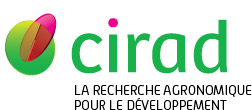Gimonneau Geoffrey, Tchioffo Majoline T., Abate Luc, Boissière Anne, Awono-Ambéné Parfait, Nsango Sandrine E., Christen Richard, Morlais Isabelle. 2014. Composition of Anopheles coluzzii and Anopheles gambiae microbiota from larval to adult stages. Infection, Genetics and Evolution, 28 : 715-724.
|
Version publiée
- Anglais
Accès réservé aux personnels Cirad Utilisation soumise à autorisation de l'auteur ou du Cirad. Gimonneau_2014.pdf Télécharger (2MB) | Demander une copie |
Quartile : Q2, Sujet : INFECTIOUS DISEASES
Liste HCERES des revues (en SHS) : oui
Thème(s) HCERES des revues (en SHS) : Anthropologie-Ethnologie
Résumé : During their immature life stages, malaria mosquitoes are exposed to a wide array of microbes and contaminants from the aquatic habitats. Although prior studies have suggested that environmental exposure shapes the microbial community structure in the adult mosquito, most reports have focused on laboratory-based experiments and on a single mosquito epithelium, the gut. In this study, we investigated the influence of the breeding site on the development of the Anopheles coluzzii and Anopheles gambiae microbiota in natural conditions. We characterized bacterial communities from aquatic habitats, at surface microlayer and subsurface water levels, to freshly emerge adult mosquitoes using multiplexed 16S rRNA gene pyrosequencing and we separately analyzed the microbiota associated with the different epithelia of adult individual, midguts, ovaries and salivary glands. We found that the distribution of bacterial communities in the aquatic habitats differed according to the depth of water collections. Inter-individual variation of bacterial composition was large in larvae guts but adult mosquitoes from a same breeding site shared quite similar microbiota. Although some differences in bacterial abundances were highlighted between the different epithelia of freshly emerged An. coluzzii and An. gambiae, an intriguing feature from our study is the particular similarity of the overall bacterial communities. Our results call for further investigations on the bacterial population dynamics in the different tissues to determine the distinctive characteristics of each microbiota during the mosquito lifespan and to identify specific interactions between certain key phyla or species and the insect life history traits.
Mots-clés Agrovoc : Anopheles, Anopheles gambiae, malaria, larve, stade de développement animal, habitat, flore microbienne, intestin, epithelium, milieu aquatique, flore bactérienne, identification
Mots-clés géographiques Agrovoc : Cameroun
Mots-clés complémentaires : Anopheles coluzzii
Mots-clés libres : Malaria, Anopheles gambiae, Anopheles coluzzii, Microbiota, Epithelia, Larval habitat
Classification Agris : L72 - Organismes nuisibles des animaux
L73 - Maladies des animaux
Champ stratégique Cirad : Axe 4 (2014-2018) - Santé des animaux et des plantes
Auteurs et affiliations
-
Gimonneau Geoffrey, CIRAD-BIOS-UMR CMAEE (FRA)
 ORCID: 0000-0002-0613-841X
ORCID: 0000-0002-0613-841X
- Tchioffo Majoline T., IRD (FRA)
- Abate Luc, IRD (FRA)
- Boissière Anne, IRD (FRA)
- Awono-Ambéné Parfait, OCEAC (CMR)
- Nsango Sandrine E., Université de Douala (CMR)
- Christen Richard, CNRS (FRA)
- Morlais Isabelle, IRD (FRA)
Source : Cirad-Agritrop (https://agritrop.cirad.fr/584019/)
[ Page générée et mise en cache le 2025-09-04 ]




